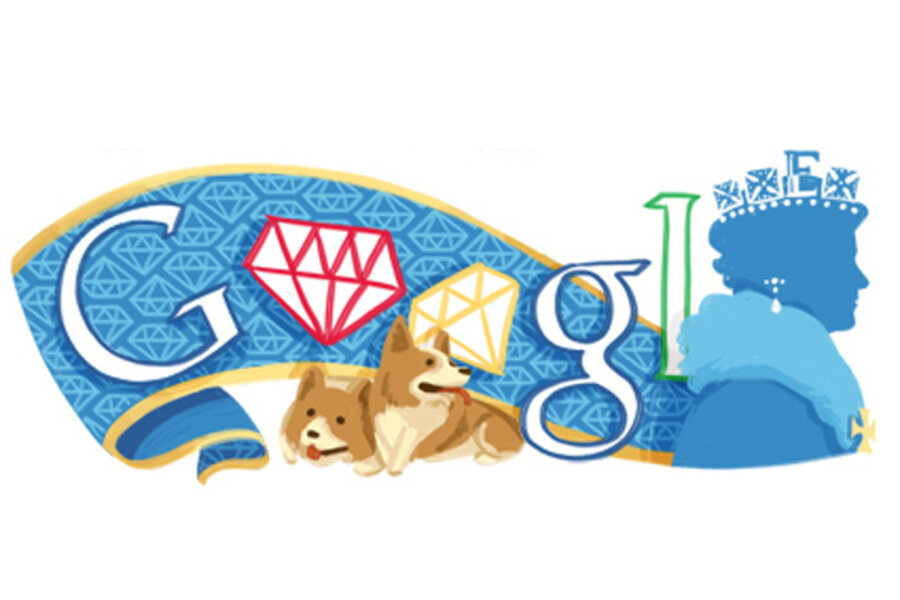Queen's Diamond Jubilee: Just how many dogs does she own?
Loading...
For the Queen's Diamond Jubilee, Google chose three things to represent Queen Elizabeth II in its doodle tribute: Her silhouette wrapped in finery, a pair of diamonds to denote the event, and, of course, corgis.
These darling dogs have become something of a symbol for the queen. In countless photographs, the tiny companions are dashing around her ankles or panting adorably. But just how many dogs does she own?
The simple answer: so many that it's hard to keep track.
At this moment, the queen has three corgis – Monty, Willow, and Holly. There's also Cider, Candy, and Vulcan, her three dorgis (a mix between a corgi and a dachshund). The royal website claims that she was the first to breed dorgis. Other sources say the match came after an accidental union with Princess Margaret's dachshund, Pipkin.
But why limit yourself to six dogs? In May, the magazine Country Life wrote about her extensive collection of pooches in eastern England. The estate's kennel has room for 100 hunting dogs. The current count is closer to 20 dogs, mostly labradors and cocker spaniels. According to the magazine, the queen personally names all of her dogs. For example, she dubbed a recent addition "Gryffindor," after the Harry Potter series. In fact, the lab is part of a Harry Potter-themed litter.
The same estate houses more than 200 birds, including racing pigeons. (The queen is president of multiple pigeon-racing clubs.)
The Daily Beast reports that because an old law, "The Queen still owns all the sturgeons, whales and dolphins in UK waters." The same goes for all of the mute swans.
The London Zoo is full of animals given to Elizabeth II as gifts – sloths, giant turtles, an elephant. The list goes on.
Yet despite this army of pets, the diminutive corgi has come to represent the queen. She has owned more than 30 during her reign.
"The breed was introduced to the Royal Family by her father, King George VI, in 1933 when he bought a Corgi called Dookie from a local kennels," says the official royal website. "The animal proved popular with his daughters and was described as ‘unquestionably the character of the Princesses’ delightful canine family’ and ‘a born sentimentalist’."
The queen's first personal corgi, Susan, came as a gift on her 18th birthday. Most of Elizabeth's corgis descend from Susan.
In some ways, the unexpected ascent of these modest dogs matches Elizabeth's rise. When she was born, no one expected her to be queen. Her uncle should have taken the crown. But he abdicated the throne when she was nine years old, shifting responsibly to her father. When King George VI died and Elizabeth took his place, Susan was there. And now, 60 years later, the United Kingdom celebrates the diamond jubilee – corgis and all.
For more on how technology intersects daily life, follow Chris on Twitter @venturenaut.





